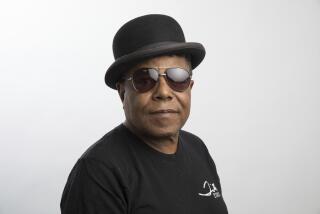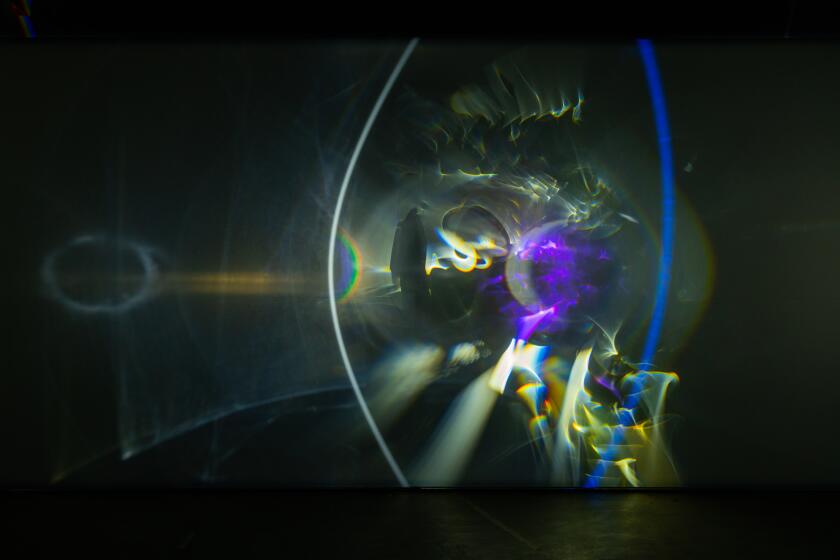Amsterdam Is Center for Van Gogh Centenary
If the Netherlands, with its 500 museums, has earned the title of “Museum Land,” then Amsterdam, which boasts more than 40 “official” museums in its historic environs, is surely the museum capital.
No visit is complete without meandering along the Museumplein, the tree-lined thoroughfare where one can view the comprehensive collection of Dutch masterworks in the Rijksmuseum, see modern classics at the Stedelijk or see innovative works on paper at the Museum OverHolland.
In the midst of this aesthetic wonderland the Van Gogh Museum remains a priority, and with 1990 marking the centenary of that great painter’s death, it will indeed be the year of Van Gogh.
The 100-year celebration will be highlighted by an exhibition of 120 paintings that Van Gogh considered his most important works. The show opens next March 30, the day of Van Gogh’s birth, and concludes on July 29, the 100th anniversary of his death.
As a companion exhibit, 250 drawings will be shown in a new wing at the Kroller-Muller Museum in Otterlo, renowned for its extensive Van Gogh collection (278 pieces) and considered one of Europe’s most beautiful museums.
About one-third of the 120 paintings and half of the 250 drawings are from the collection of these two museums. The remainder are on loan from the Musee d’Orsay in Paris, the Metropolitan Museum in New York City, the National Gallery in London and the Pushkin Museum in Moscow, as well as other institutions and private collections.
Among the challenges in putting such an exhibition together has been the painstaking process of gathering the works favored by the artist. This is to be an exhibit of Van Gogh’s best work in his own eyes. According to Ronald de Leeuw, Van Gogh Museum director, “We have tried to reconstruct through the detailed commentary of his letters, research by scholars and the evidence of the works what he would have wished to be included.”
De Leeuw said that the work “will emphasize the oeuvre of Vincent, the essence of the man, by showing a reworking of a theme that exists in at least three versions of his paintings.”
Examples are the memorable “Sunflowers,” “The Potato Eaters,” “The Yellow House,” “The Reapers” and “The Bedroom.” Other works will include large paintings of similar size in their final versions, not works in progress.
“The emphasis will be on the end of his life, with the majority of works from the Arles, Auvers, San Remy and Paris periods, and several from the earlier Dutch period,” De Leeuw added.
Frits Becht, director of the Van Gogh 1990 Foundation, confirmed that the challenges have been formidable. “It’s always a feat to get those paintings that you want the most. People are reluctant to part with them not only because of their artistic value, but due to security risks that include transportation and temperature maintenance.
“The first question of the lenders concerns the security,” he said, citing an example of the Philadelphia Museum of Art’s “Sunflowers” canvas, which, according to its bequest, cannot be loaned under any circumstances.
A respected collector in Holland, Becht doubts that such an exhibition could be possible to mount after 1990, “not only for the increasing difficulty in bringing so many of these important paintings together, but because of their escalating values.”
Crowds are predicted to be even larger than the Stedelijk Museum’s successful Malevich retrospective earlier this year. For the first time ever in the Netherlands, visitors may buy tickets in advance for a two-hour period in which to enter the museum and then stay as long as they like.
A significant restructuring of the museum is under way that includes enlarging the restaurant as well as adding a room where visitors can read the two-volume catalogue or sit in quiet reflection.
The museum hours in Amsterdam and Otterlo will be extended to seven days a week, from 9 a.m. to 9 p.m.
Other exhibitions in the commemorative year 1990 include:
--”Around Van Gogh” at the Stedelijk Museum from April to July. About 250 photographs will reconstruct Van Gogh’s surroundings as seen by his contemporaries.
--”Letter Sketches” at the Van Gogh Museum, Aug. 17-Dec. 10. An exhibition of illustrated letters by Van Gogh that were mainly sent to his brother Theo and his sister Wil. They have never been shown before due to their fragility.
--”Vincent and Modern Art” at the Van Gogh Museum beginning Nov. 16. This exhibition will focus on the impact of Van Gogh on early modern art between his death in 1890 and 1914, with works by German expressionists and Paris Fauvres, including Kokoschka, Matisse, Miro, Schiele and the young Picasso.
--”Van Gogh by the Loom” at the Netherlands Textile Museum in Tilburg (date not yet announced). This exhibition is based on a theme of weaving as well as Van Gogh’s interpretation of the genre.
--”Japanese Prints from the Collection of Vincent and Theo Van Gogh” at the Rijksmuseum Volkenkunde in Leiden (date not yet announced).
There will be catalogues of these exhibitions as well as several other publications of note, including critical journals and a volume of “Letters of Condolence” to Vincent’s brother Theo, which give insight into the people who knew and cared for Van Gogh.
In addition to the impressive two-volume, 700-page catalogue devoted to the paintings and drawings, the Van Gogh 1990 Foundation has also commissioned a series of posters by a diverse selection of internationally acclaimed artists in tribute to Van Gogh. Among them are Willem de Kooning, Cy Twombley, Francis Bacon, Roy Lichtenstein and Arnulf Rainer.
There will also be a 1990 handbook that will summarize all the exhibitions and events of the commemorative year. Like the catalogue, it will be available in several languages. Admission to the joint exhibitions at the Van Gogh and Kroller-Muller museums will be 35 guilders ($17.50 U.S.) for a dual ticket or 20 guilders ($10 U.S.) for a single admission.
It’s a 1 1/2-hour train ride from Amsterdam to Otterlo (via Ede or Arnhem), followed by a short bus or taxi ride. From Ede to Otterlo, take bus 110 from the train station. From Arnhem to Otterlo, take bus 107.
Motorists can make the trip in less than an hour, and park in the lot at the entrance to the 13,000-acre Hoge Veluwe nature reserve.
After taking a leisurely stroll of 1 1/2 miles or riding one of the 400 white bicycles, one enters Europe’s largest sculpture garden, with modern works by Henry Moore, Barbara Hepworth, Rodin and Lipschitz, among others.
For more information, contact any VVV tourist office in the Netherlands.
The following hotel-restaurants in Otterlo are recommended:
Jagersrust, Dorpsstraat 19/21. This 100-year-old hotel/restaurant was renovated last year, and its 19 rooms now include TV, telephone and bathroom. Breakfast is included in the $32 per-person rate. Bikes are for rent on the premises, or one can walk to the Kroller-Muller in about 40 minutes.
Sterrenberg, Houtkampweg 1. Guests can enjoy the swimming pool, sauna and whirlpool facilities as well as the well-furnished room that includes TV, telephone and bathroom. Breakfast is included in the $35 per-person rate.
For general information on travel to the Netherlands, contact the Netherlands Board of Tourism, 90 New Montgomery St., Suite 305, San Francisco 94105, (415) 543-6772.
More to Read
The biggest entertainment stories
Get our big stories about Hollywood, film, television, music, arts, culture and more right in your inbox as soon as they publish.
You may occasionally receive promotional content from the Los Angeles Times.










